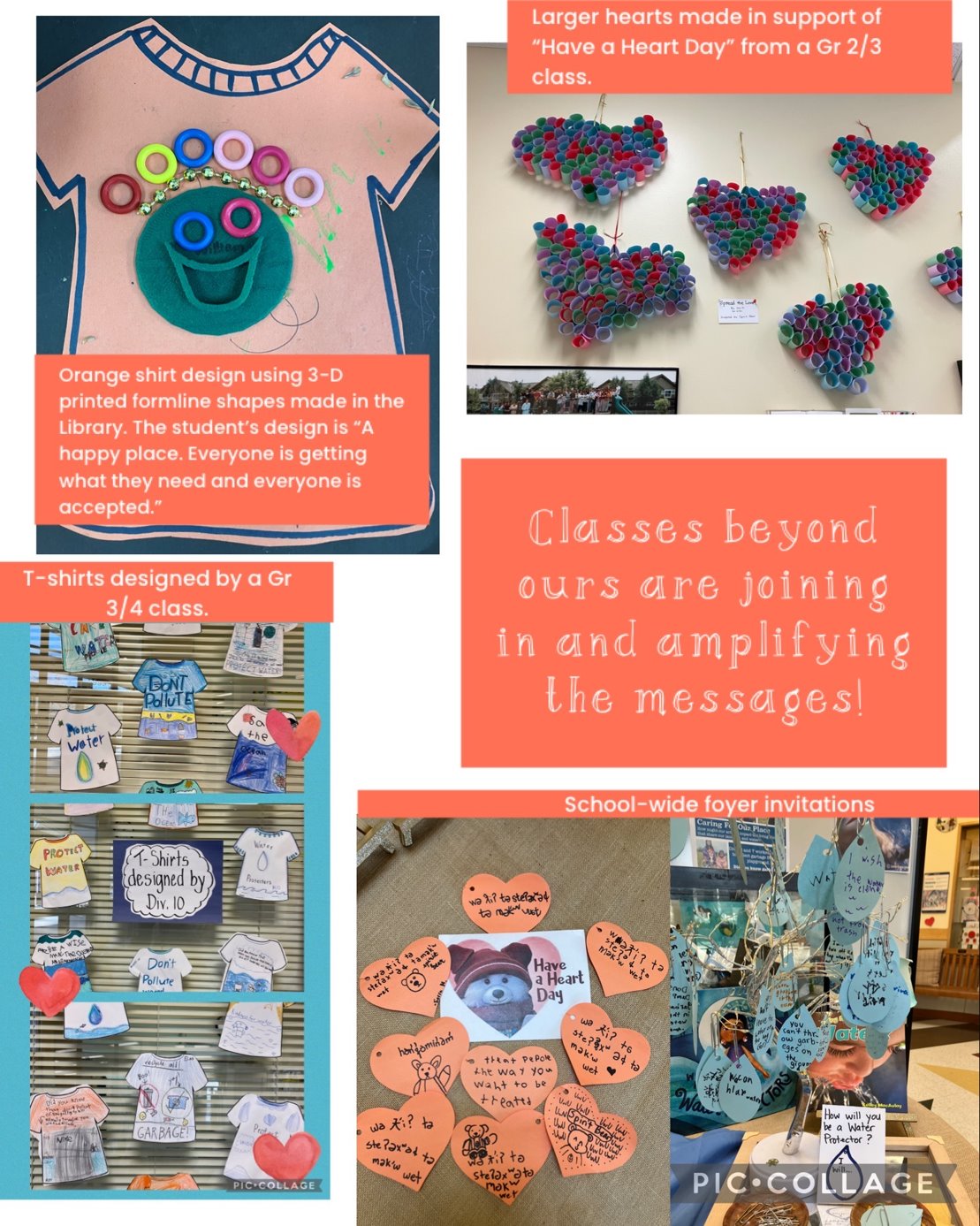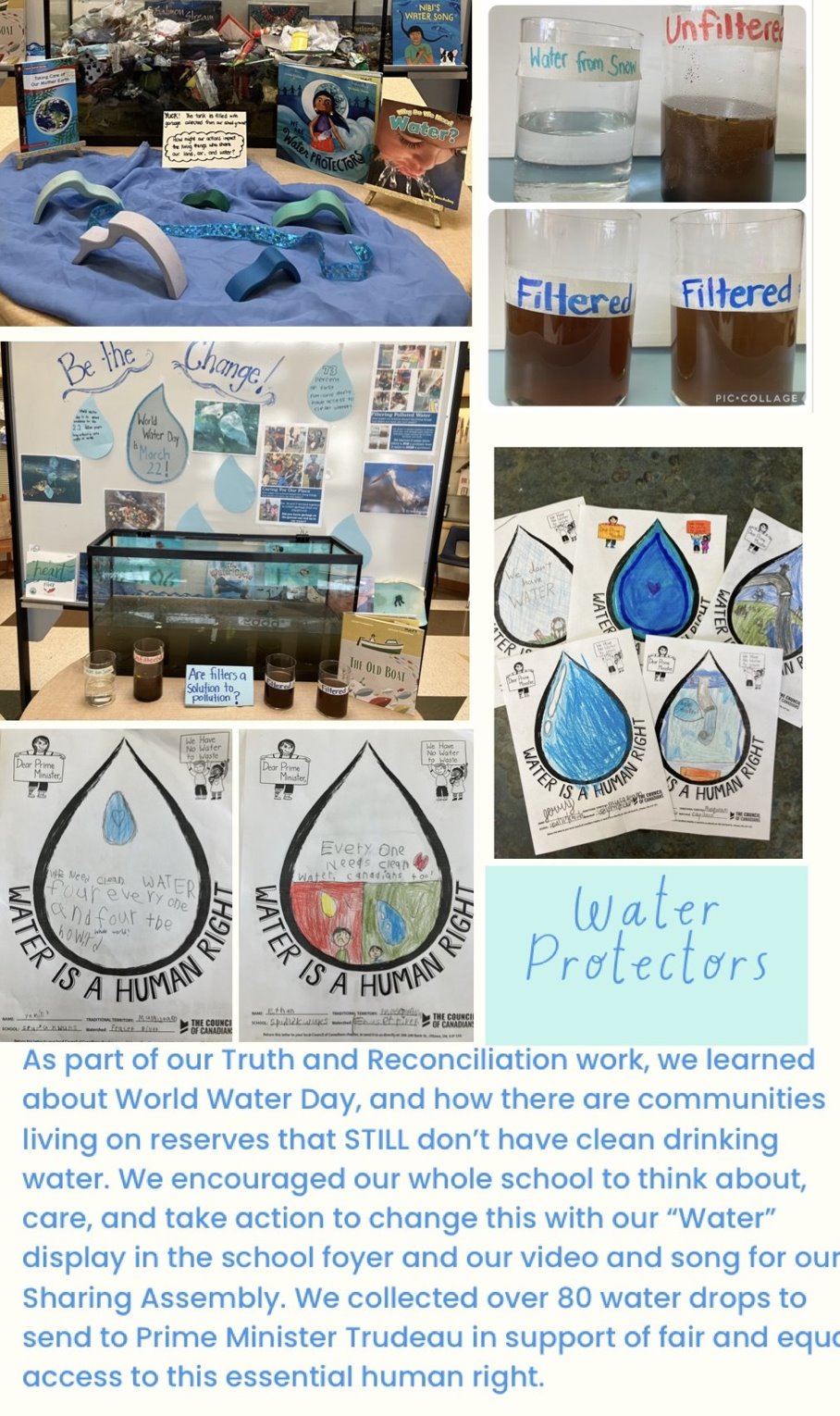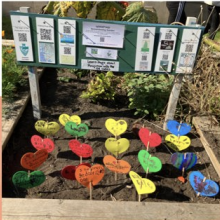What was being noticed about learners at Spul'u'kwuks?
We notice that our learners have a developing understanding of the history and significance of our place and school name (our school is located right by the Fraser and has a midden adjacent to our back field and our school name is anglicized hən̓q̓əmin̓əm̓).
In our younger learners, we see a need to focus on developing an appreciation of hən̓q̓əmin̓əm̓, developing Indigenous ways of knowing and learning, and grounding their experiences in place through outdoor learning. With our older learners, deeper, more personal connections to our shared place and history need to be explored. Many of our students experience little agency in their lives (very regimented with classes after school, etc.), and seeing themselves as “change-makers” and advocates for change is something we are working to grow within them.
We notice the learning we are doing in our classrooms need to be shared with the wider school community so we can begin to build the foundation of a common “school story”.
Actions Taken:
For the National Day for Truth and Reconciliation, we engage in a school-wide “Walk for Reconciliation” where students walk around our field and pause at several provocations along the way and end at our “Remembering Garden”. We walked with our big buddies and engaged in a reflection of what we learned, what we felt, and what actions we would take to further T&R in our lives. We also wrote to the Prime Minister to request equal and adequate funding for ALL students, so every learner could enjoy ”safe and comfy” schools (Shannen’s Dream).
For our students to be “stewards” of knowledge and deepen their personal connection to the land, history, and stories of this place, we had originally hoped to share our learning with the wider community through a school mural and signage in our garden spaces and on our school grounds. We have had to work on a smaller scale while we work through the protocols and processes of bringing in an artist from Musqueam. Our inquiry changed to: How can we empower students to affect change and build a common “school story” on a smaller scale? We began using our front foyer space as an open provocation for our learners to engage in events such as “Have a Heart Day” and “World Water Day”. Students were invited to create messages on hearts for “Heart Gardens” in our front planters ,write “Valentine” letters to the Prime Minister, and learn some hən̓q̓əmin̓əm̓ . The same model was use for “World Water Day” to raise awareness of the ongoing water advisories reservations still face today.


Most students expressed they want learn more about Musqueam culture, history, and language, and many made a goal of teaching their families as part of their Reconciliation work.
From scanning student reflections, we did notice many said they felt “happy”, “excited”, and “calm” during our Reconciliation Walk.
Students are making connections to the wider community, engagement across our school community is increasing, and students are learning with joy!
Next steps:
-begin our book club (Jo Chrona’s, “Wayi Wah!”) for our final term
-continue to pursue school mural with a Musqueam artist
-continue to build deeper connections to place and history through stories, experiences, and outdoor learning opportunities with our students
-work on visibility and signage for our school grounds to further educate of our families and community about history, place, and culture
-sharing student-created land acknowledgements for our Morning Announcements
